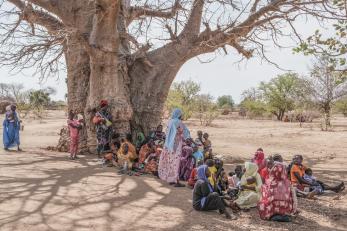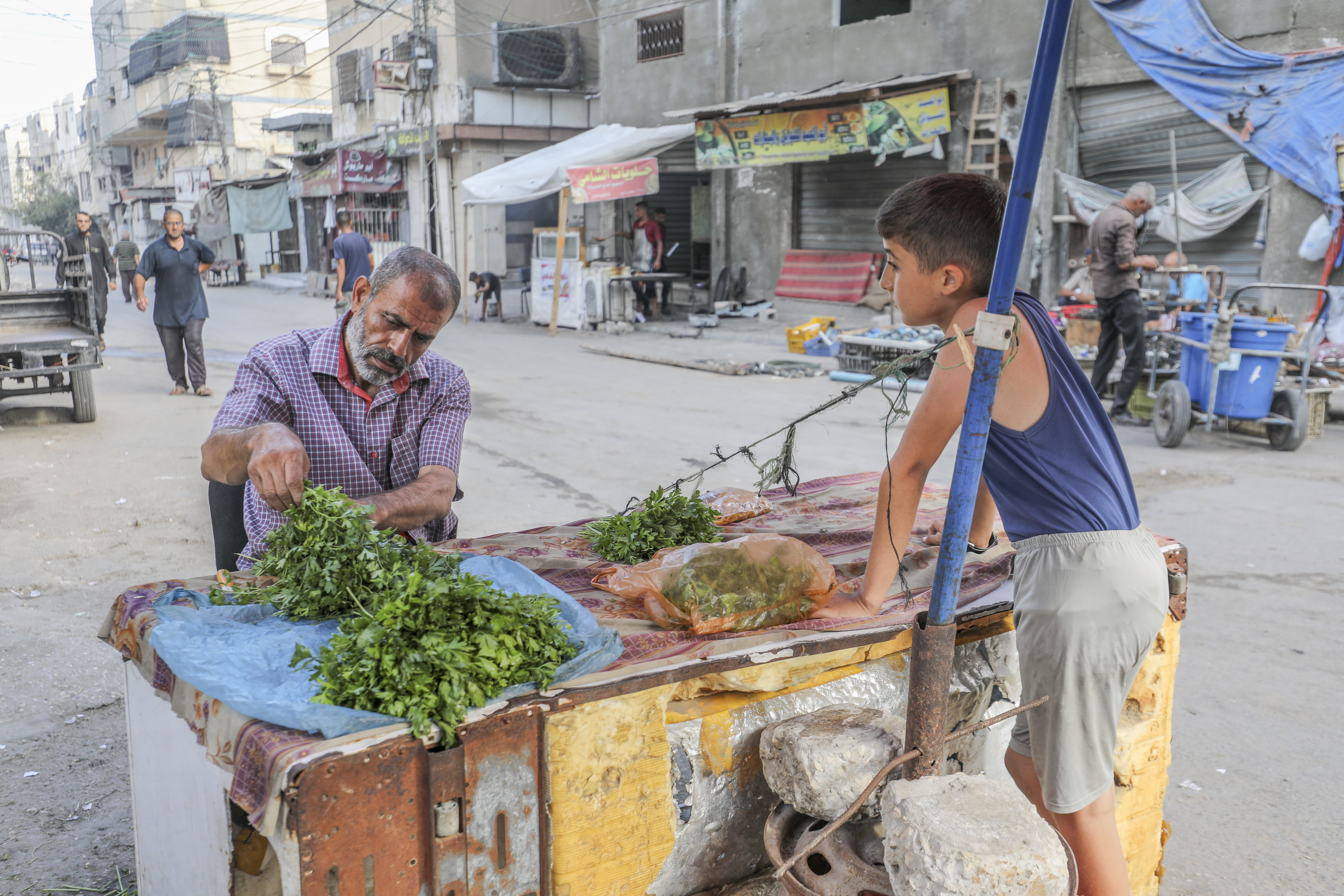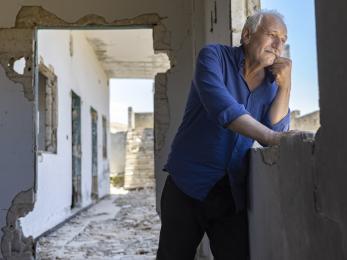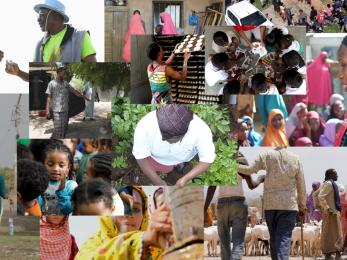The facts: The crisis in Sudan

Sudan is facing renewed violence, displacement and an unprecedented need for humanitarian aid. The fierce fighting that began on April 15, 2023 has compounded the crisis across the country. According to the United Nations, nearly 13 million people have fled their homes in search of safety, and 8.6 million people have been displaced inside the country since the fighting escalated.
El Fasher, capital of North Darfur, fell in November 2025 after enduring over 500 days under siege. People who had already been surviving on animal hides, wild plants, and livestock feed now must grapple with an even more desperate fight for their lives amid reports of killings, abductions, and mass displacement.
“We must not look away from the horrors unfolding in El Fasher and across Sudan,” said Melaku Yirga, Mercy Corps Vice President, African Region. “Silence only fuels the suffering and allows it to continue. This is the moment for the world to act: to open access, protect civilians and humanitarian responders, and deliver the aid that can still save lives. The world cannot claim ignorance—only inaction.”
Since 2004, Mercy Corps has worked in Sudan to support hundreds of thousands of Sudanese, displaced households, and refugees from nearby countries.
Learn more about the current crisis and Mercy Corps’ work in Sudan.
- When did the crisis in Sudan begin?
- How is the conflict affecting people in Sudan?
- What was the situation in Sudan like before the current crisis?
- How is Mercy Corps supporting communities amidst the crisis?
- What is Mercy Corps’ experience working in Sudan?
When did the crisis in Sudan begin?
In 2021, a coup in Sudan ended a civilian transitional government that had been established following the ouster of former President Omar al-Bashir in 2019. The political transition was supposed to result in elections of civilian parties by the end of 2023.
However, the power struggle between the Sudanese army and a paramilitary group called Rapid Support Forces reached a critical point on April 15, 2023, when clashes broke out across Sudan. The capital city of Khartoum is experiencing extensive violence due to the conflict, with fighting in many surrounding areas as well. More than 100,000 people have fled Sudan so far, and 300,000 are internally displaced due to the current crisis, according to the U.N.
How is the conflict affecting people in Sudan?
Tens of thousands of people have been killed since the fighting escalated in 2023, according to the UN. People are experiencing mass displacement, collapsing health services, severe food and water shortages—particularly across the Darfur and greater Kordofan regions. ▸ Watch Katy Crosby, Mercy Corps Senior Director US Policy and Advocacy, discuss the Sudan crisis in a November 2025 interview on "The Takeout.”
Camps for internally displaced people have become the epicentre of the crisis. In Greater Darfur, Greater Kordofan, and Khartoum, people are trapped in overcrowded conditions with dwindling access to food, clean water, medical care, and safe shelter.
With soaring malnutrition rates, a failing health system, water contamination, poor sanitation, and low immunisation levels, disease outbreaks are having devastating consequences—including cholera, now present in all 18 states. With over 70% of hospitals out of service, millions are cut off from basic medical care.
The war has devastated agriculture, which is crucial to Sudan's economy and the main support for rural families. Once considered the country’s breadbasket, regions like Al Jazirah, Kordofan, and the White Nile have become too dangerous to farm. Violence, insecurity, and landmines have forced farmers to abandon their fields.
The war’s economic shock is devastating an entire generation. Since fighting escalated in April 2023, Sudan’s economy has shrunk by over 40%—one of the sharpest collapses globally. Young people, who make up nearly 75% of the population, are bearing the brunt.
What was the situation in Sudan like before the current crisis?
Even before the ongoing conflict, an estimated 15.8 million people—about one-third of the population—were expected to need humanitarian aid in 2023. The number of children in Sudan who are malnourished was already rising at an alarming rate. About 4 million children under five and pregnant or breastfeeding women will be acutely malnourished in 2023 and need lifesaving nutrition services.
Decades of conflict, limited investment in agricultural production, and climate shocks have resulted in cyclical food insecurity in many communities. Sudan depends on local agriculture for food security, but is hindered by floods and desertification. In Khartoum, refugees and people living in poverty face the highest rates of food insecurity in the country.
The World Bank reports that record-setting floods in 2020 and 2022 resulted in billions of dollars in estimated damages, further compounding Sudan’s economic crisis of rapid inflation and increasing food prices.
How is Mercy Corps supporting communities amidst the crisis?
Amid one of the world’s fastest-growing humanitarian crises, we are providing life-saving support across all 18 states while also helping communities lay the foundations for long-term recovery.
Today we are:
- Delivering emergency assistance. We are reaching displaced families with cash and voucher support so they can buy essentials like food, water, and hygiene supplies—helping nearly 100,000 people by 2025.
- Supporting food security and resilience. In states like Gedaref, Kassala, River Nile, and Northern State—key agricultural areas—we are helping smallholder farmers access quality seeds and tools to restore food production disrupted by conflict, displacement, and climate shocks.
- Preventing malnutrition. In partnership with local health authorities in Central Darfur, we are supporting with screening young children and pregnant or nursing women for malnutrition, providing treatment and education to help keep families healthy.
- Strengthening markets and livelihoods. In conflict-affected areas of Kordofan and beyond, we are helping small businesses get back on their feet and supporting communities to rebuild local economies.
What is Mercy Corps’ experience working in Sudan?
Since 2004, Mercy Corps has worked in Sudan to support hundreds of thousands of Sudanese, displaced households, and refugees from nearby countries.
Prior to this current escalation, Mercy Corps operated in South Darfur, North Kordofan, South Kordofan, Gedaref, and Khartoum states. Our programmes in Sudan span humanitarian, development, and peacebuilding. In 2022, Mercy Corps directly reached over 437,000 people through emergency response, water, sanitation, and hygiene, peacebuilding, agriculture, and climate adaptation programming.


